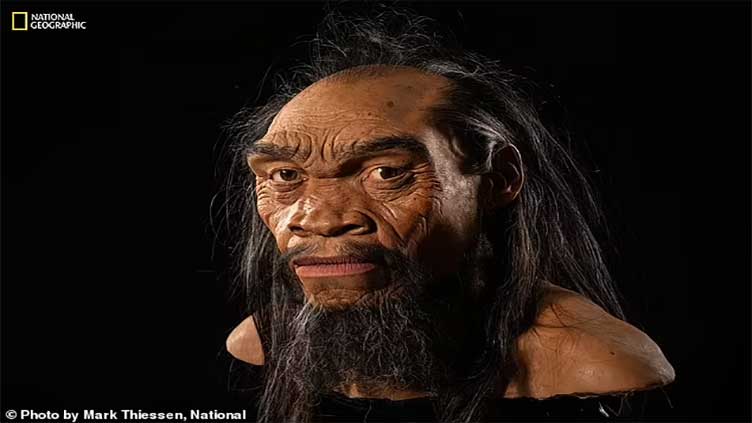Scientists reveal face of 'completely unknown' human ancestor

Technology
It can rewrite history of our evolution
(Web Desk) - Scientists have reconstructed the face of a long-lost human ancestor that may have played a critical role in our evolution.
They used the Harbin skull, also known as 'Dragon Man,' which is a 150,000-year-old nearly complete human skull discovered in China in 1933.
Paleoartist John Gurche utilized fossils and genetic data from the extinct species to recreate plastic replicas of remains.
He estimated the facial features of the ancient hominid using the eye-to-socket size ratio that is shared between African Apes and modern humans, and by measuring aspects of the skull's bone structure to determine the shape and size of the nose.
Gurche then overlaid muscle on to the face by following markings on the skull left behind from chewing, revealing the first true look at an 'unknown human.'
The species, named 'Denisovans' after a cave some of their remains were found in, lived between 200,000 and 25,000 years ago.
Their fossil and DNA records show that they lived on the Tibetan plateau, but traveled far and wide, with traces of their presence found in Southeast Asia, Siberia and Oceania.
Scientists first sequenced their genetic code in 2010 using a 60,000-year-old finger bone recovered from Denisova Cave in Siberia, finding Denisovan DNA in modern-day humans all over the world and particularly in Papua New Guinea populations.
This is strong evidence to suggest that Denisovans interbred with Homo sapiens before they disappeared. Alongside Neanderthals, these ancient humans are our closest extinct relatives.
Researchers believe that this crossbreeding helped Homo sapiens adapt to new environments as they expanded their range across the world, and thus played an important part in our evolutionary history.
Despite a wave of research over the last two decades, much remains unknown about these early humans, as their fossil record is incredibly sparse compared to that of Neanderthals.
But thanks to a skull that was hidden in northeastern China for over 80 years, we can now see what our Denisovan ancestors really looked like.
The skull was found by a worker in Harbin, China in 1933. While it is similar in size to a modern human cranium, it has a wider mouth and a more prominent brow.
Upon discovering the remarkably complete 150,000-year-old fossil, he hid it inside a well where it remained for the rest of the 20th century.
In 2018, the skull resurfaced when the Chinese worker told his grandson about it shortly before he died.
Today, this fossil is known as the Harbin skull.



